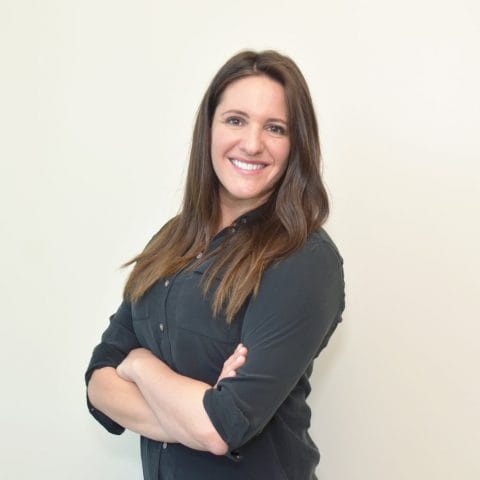By Pilates Coordinator Kim Myers
Although I knew that this postpartum condition impacts more than half of new mom’s (a surprising 60%), I was still so disappointed to learn that I fell into that category after the birth of my second child. A three finger abdominal separation, to be exact. I was checked by Amy DiRuzzo – (our licensed Physical Therapist and Pilates instructor), at roughly six months post-partum. Fast forward to 14 months post-partum, I am down to just one finger of abdominal separation. I still have work to do, but my core feel’s and looks so different, and the concern of developing a hernia has subsided. Pilates has saved me. The degree to which your abdominals separate absolutely matters. Having Diastasis recti means that you have less protection from the inside out of your body. This is where that concern of producing a hernia comes from. When there is a concern of a hernia, that is when it is time to get your Dr. involved.
So what IS Diastasis Recti?
This is an abdominal separation between two sides of the rectus abdominis muscle. It starts to appear as the baby gets bigger, but you really can’t tell or notice that you have it until after your birth. The Linea Alba is the hard connective tissue that connects the six-pack. When you develop Diastasis Recti, your Linea Alba has either torn or stretched so much, that the two sides of your rectus pull apart. See image below –
I will be the first to admit that I did not take all the actions and precautions to reduce my chances of developing a significant case of Diastasis Recti during my second pregnancy. I did the first time around. We moved states and jobs during my second pregnancy, and I didn’t dedicate nearly enough time to the exercises that I knew were important to prevent this from happening. There is truth to the fact that there is a genetic component to whether you could develop Diastasis Recti, but the likelihood of separation also depends on the strength and condition of your core before you actually fall pregnant. So, if you are thinking about getting pregnant, start preparing your Transverse Abdominis – AKA; the deepest layer of your abdominals. This is where Pilates comes in. Pilates teaches you not only to brace, but to also ‘’hollow’’ your core. This activates that Transverse Abdominis, also known as our interior corset. A simple crunch targets the superficial layer of your abdominals. Having a strong Transverse abdominis in general (male, female, younger, older) can prevent us from overusing our back muscles and joints.
Once Amy confirmed what I already knew to be true, I made a promise to myself that I would be diligent about “closing my Gap”. I have worked hard. There are still plenty of things that I shouldn’t be doing. For example; crunches or abdominal curls. When your head lifts off the mat, the rectus abdominis is not only being shortened, but it’s being loaded too. This, in turn puts strain on the muscles that have already been stretched too far. I turned to exercises that put the least amount of stress on my Diastasis. For example; I work in a seated position on the Pilates Chair, as this encourages and promotes co-contraction of the abdominals and back, which is helpful in healing diastasis/’’closing my gap’’. The Pilates Reformer is one of my very best friends as well. If I did not treat my diastasis with Pilates, or if I jumped into the wrong type of exercise, I would be in a very different boat. I would have run the risk of tearing my Linea Alba, and that requires surgery. I am so close to getting back to exercises that involve flexion, rotation and back extension. Till then – patience and persistence will continue to be my strategy.
Disclaimer: If you are concerned about possibly having Diastasis, please speak with a doctor or a medical professional. If you would like some guidance on pre and post-natal exercise routines, please reach out to us!
 Kim Myers
Kim Myers
Pilates Coordinator
Kim comes to us from the Claremont Club in California, where she taught Pilates and group fitness. Kim has a Bachelor of Arts degree from Texas State University in San Marcos and has two children with her husband Chris. She loves spending time with her family, knitting and watching a great episode of Dateline.
“Be in control of your body and not at it’s mercy’’ – Joseph Pilates
[email protected]
303.770.2582 x375

